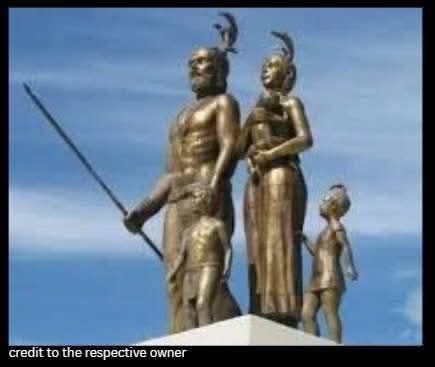In 1511, a storm wrecked a Spanish ship off the coast of Yucatán. Among the survivors was Gonzalo Guerrero, a soldier from Palos de la Frontera.
Captured by the Maya and enslaved, Gonzalo did what few Europeans ever dared: he adapted. He earned his freedom, fought as a warrior, learned their customs, and fully embraced their rituals—tattoos, piercings, and all.
Then came love. He married a Maya woman, remembered as Za’azil Há, and together they had children—the first mestizo family in Mexico.
Years later, when Hernán Cortés sent for him, Jerónimo de Aguilar begged Gonzalo to return to the Spanish. Gonzalo’s answer became legend:
“Brother Aguilar, I have a wife and these children who are my joy. Here I am respected, and here I belong. What would our brothers in Spain say if they saw my tattooed face and pierced ears? No—I am of this land now.”
When the Spanish advanced into Yucatán, Guerrero fought against them—leading Maya warriors into battle. He died from wounds sustained on the battlefield, his body said to have been carried away by the river, back toward the ocean that first brought him.
History remembers him not as a conqueror, but as a bridge. Gonzalo Guerrero and Za’azil Há—parents of the first mestizo children—showed that from love could come a new identity, one that has carried forward in Mexico ever since.
